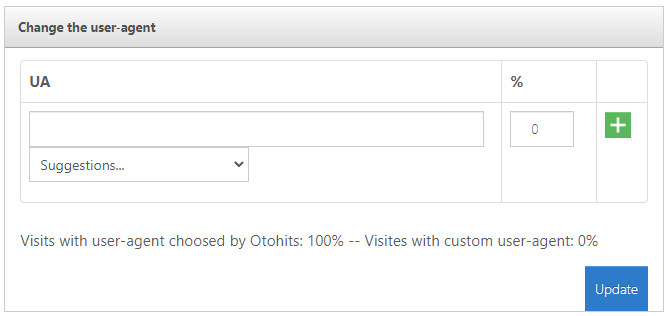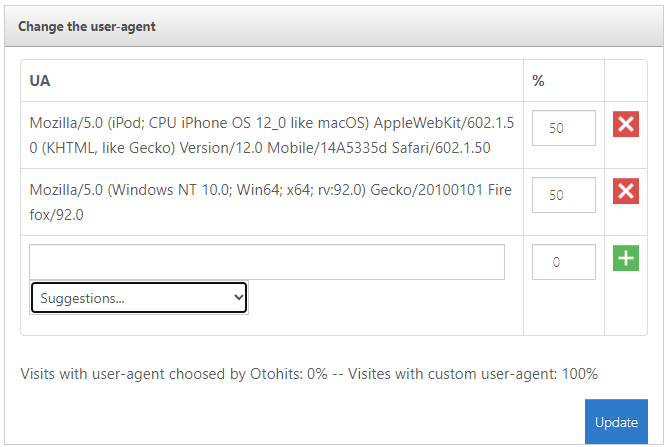# What is the user-agent?
User-agent is like a signature of your browser. With the user-agent, a website knows which browser you are using.
Here is an example of a user-agent: Mozilla/5.0 (Windows NT 5.1; rv:31.0) Gecko/20100101 Firefox/31.0
The above example shows you the Firefox 31 user-agent.
You can check your current user-agent on the following website: https://whatmyuseragent.com/ (opens new window)
# Why should I change the user-agent?
Most statistics and traffic tools can easily look at the user-agents that came on your website. When the same user-agent is always used, it's easier to suspect low quality traffic.
Changing the user-agent will bring you more natural visits, made with multiple user-agent and you can even simulate visits from mobile phones or tablets.
# How does it works?
When the Application is started, it will automatically and randomly take a default user-agent. This is to avoid having the same one for every Application and introduce some variety.
You can also choose manually the user-agents to be used on your links.
- Go to your my sites page
- Click on the configuration button
 of one of your links and click on advanced options and info
of one of your links and click on advanced options and info - Find the
Change the user-agentrow and enable it

- You will see a table with a row below to add a new user-agents. You can also select pre-made user-agents from the suggestion list

- In the example below, I chose to receive 50% of the visits with an iPhone user-agent and the other 50% with Firefox user-agent

- Click on the
Updatebutton
# Notes
- Default user-agent chosen by the Applications and Suggestions are not guaranteed to be up to date